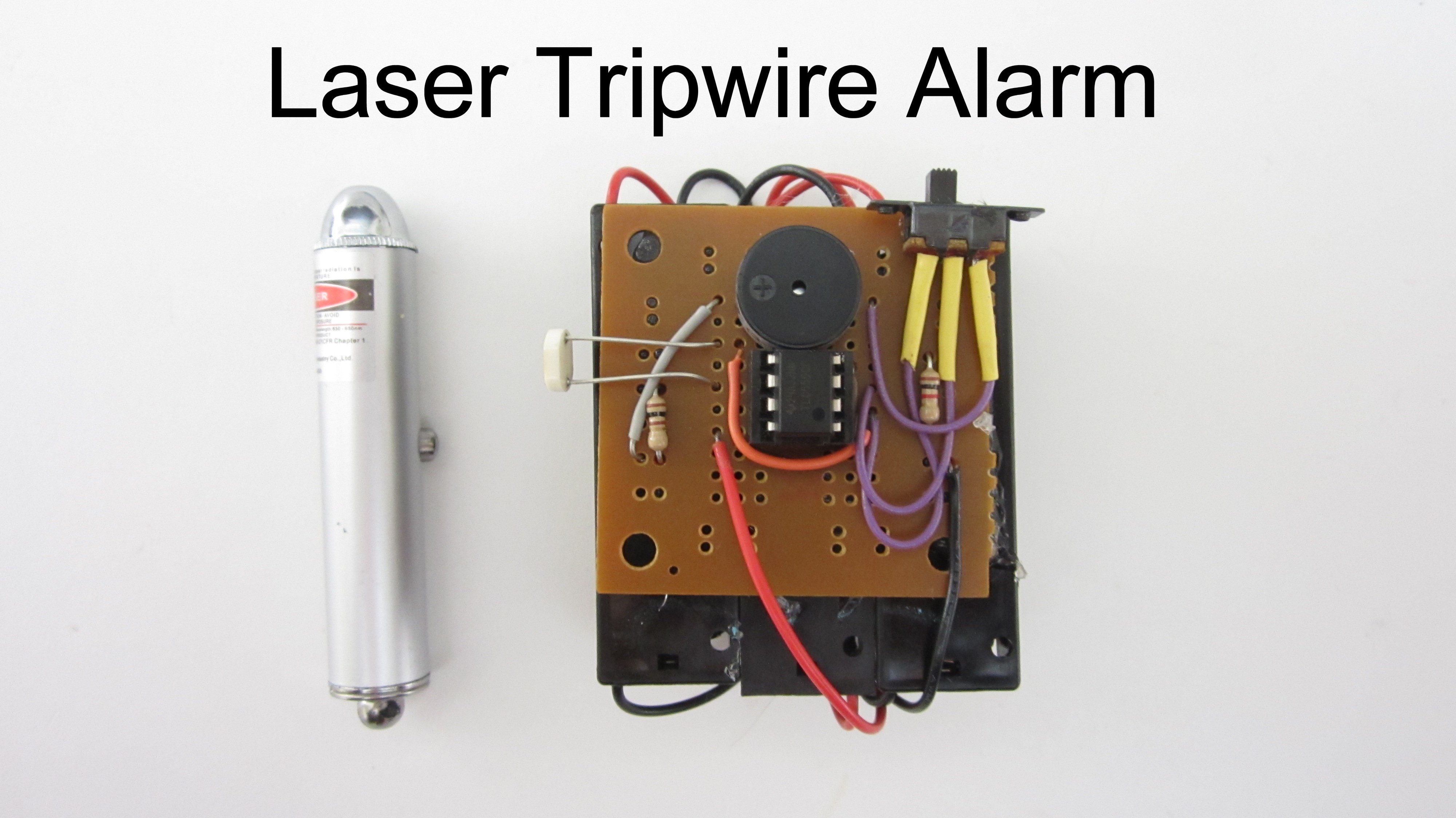This alarm circuit is yet another way to use a 555 timer IC. The light sensor that detects the laser is a CdS photoresistor (R3). This is wired in series with standard fixed resistor (R2). These two resistors form a voltage divider that is used to activate the IC. The value of R2 should be approximately the same as the resistance of the photoresistor when you are shining the laser pointer directly at the light sensitive face. Because the output characteristics of photoresistors varies considerably from one to the next, you need to measure it with a multimeter. So connect the photoresistor to the multimeter and shine the laser pointer directly at it. In my case, its resistance was about 100 ohms. So I used a 100 ohm fixed resistor for R2.
When the light beam is interrupted, the resistance of the photoresistor increases dramatically. As a result, the voltage at pin 6 also increases and goes above the reference threshold. This causes the output pin 3 to go LOW and activates the alarm.
To turn off the alarm and reset the system, a (single pole double throw) switch disconnects the speaker and sends the LOW signal from the output pin 3 to the trigger pin 2. The system is now deactivated. To reactivate it, flip the switch back to the original position. The alarm will remain off until the next time that the light beam is interrupted.
The supply voltage can be anything from 4.5V to 18V. I chose to use 4.5V (three AA batteries) because this is the same voltage that is used by the laser pointer. This gives you the option of powering the laser pointer with the same battery pack as the alarm circuit.
The resistor R1 acts as a pull-up resistor for pin 2. It helps to prevent false triggering from static electricity. But in many cases it can be left off without causing any problems.
The alarm that I am using is a piezo buzzer. Any buzzer can work as long as it is rated to operate at the appropriate voltage.






























